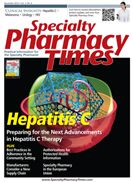Publication
Article
Specialty Pharmacy Times
Urology
Studies show that residents in nursing homes frequently receive an antibiotic for a suspected infection even without signs and symptoms.
Studies show that residents in nursing homes frequently receive an antibiotic for a suspected infection even without signs and symptoms.
Asymptomatic Bacteriuria, Antibiotic Use, and Suspected UTIs in Nursing Homes
Urinary tract infections (UTIs) are the most commonly treated infections among nursing home residents. Symptomatic UTIs accounted for 29% of all infections among nursing home residents in a recent US Department of Veterans Affairs survey, but studies show that residents frequently receive an antibiotic for a suspected infection even without definitive signs or symptoms.
Accurate diagnosis of UTIs is challenging in nursing homes because of the prevalence of asymptomatic bacteriuria (ASB) among residents, reported to be as high as 50%. Residents without physical signs or symptoms of a UTI but with an abnormal urine study result may receive antibiotics because of ASB.
Although there is no evidence that treating ASB in older adults is beneficial, ASB is considered to be a cause of the emergence of multidrug resistant organisms. Thus, several consensus guidelines have been developed to assist clinicians in differentiating symptomatic UTIs from ASB, and set criteria for evaluating antibiotic treatment for a suspected UTI.
In a recently published study in BMC Geriatrics, Charles Phillips of the University of Missouri-Columbia School of Medicine and colleagues analyzed the use of antibiotics for suspected UTIs in nursing home residents in 4 Texas facilities, differentiating between residents treated with an antibiotic who presented with documented signs or symptoms of a UTI and those who received antibiotics but were asymptomatic.
The most powerful predictor of antibiotic treatment for ASB was an indwelling urinary catheter. Half of the antibiotic prescriptions for suspected UTI in a resident without catheters occurred with no documented UTI signs or symptoms. Urine studies were performed in almost all suspected UTI cases in which antibiotics were prescribed.
The researchers concluded that efforts to improve appropriate use of antibiotics in nursing homes must address clinical decision making solely on the basis of diagnostic testing in the absence of signs or symptoms of a UTI.
Simvastatin Suppresses Negative Urodynamics, Bladder Inflammation
Patients undergoing cyclophosphamide (CP) chemotherapy frequently develop cystitis, leading to urinary dysfunction and hemorrhage. Studies have suggested that statins may have anti-inflammatory properties and might be uroprotective.
Researchers at the Medical University of South Carolina led by Francis M. Hughes, Jr, PhD, assessed the ability of daily oral simvastatin to reduce the negative urodynamic changes associated with CP-induced cystitis and to prevent bladder inflammation. They analyzed urodynamic properties in female Sprague-Dawley rats and assessed inflammation in the groups with Evans blue extravasation. The animals were divided into 4 groups: group 1, vehicle orally for 7 days; group 2, simvastatin; group 3, vehicle plus CP; and group 4, simvastatin plus CP.
CP stimulated significant increases in the number of nonvoiding contractions and decreases in the peak voiding pressure. Simvastatin returned these parameters to the control levels. Other urodynamic parameters, such as the threshold pressure, were not affected by simvastatin or CP, or the combination of the 2. CP-induced inflammation in the bladder was suppressed by simvastatin.
The researchers concluded that simvastatin was effective at ameliorating negative urodynamic changes and inflammation in the bladder after CP administration, and it is a potential way to prevent side effects in patients undergoing CP chemotherapy.
Fesoterodine Decreases Nocturnal Urgency
A large, randomized trial of flexibledose fesoterodine found that the drug significantly reduced nocturnal urgency episodes compared with placebo in subjects with overactive bladder. In a study recently published online in the Journal of Urology, Jeffrey Weiss, MD, PhD, of Downstate College of Medicine, New York, and colleagues reported that fesoterodine produced a mean reduction of 1.28 nocturnal urgency episodes per night, statistically superior to placebo and considered by the researchers to be clinically significant. The study is the first prospective study to assess antimuscarinic efficacy for reducing nocturnal urgency.
The trial followed 963 adults with at least 2 but not more than 8 nocturnal urgency episodes per 24-hour period. They were randomly assigned to 12 weeks of double-blind treatment with placebo or fesoterodine (4 mg/d for 4 weeks with optional increase to 8 mg/d). The primary end point was change from baseline to week 12 in mean number of micturition-related nocturnal urgency episodes per 24-hour period. Patients kept bladder diaries to assess change.
The drug also led to significant improvements over placebo in secondary end points of micturitions per night and nocturnal frequency urgency sum. Health-related quality of life also improved significantly based on patients’ responses to the overactive bladder questionnaire.
Researchers observed few clinically important side effects related to fesoterodine. Future research is needed to assess whether other antimuscarinic agents improve nocturnal urgency.
Fast Fact: Antimicrobial treatments do not affect the prevalence of bacteriuria.







